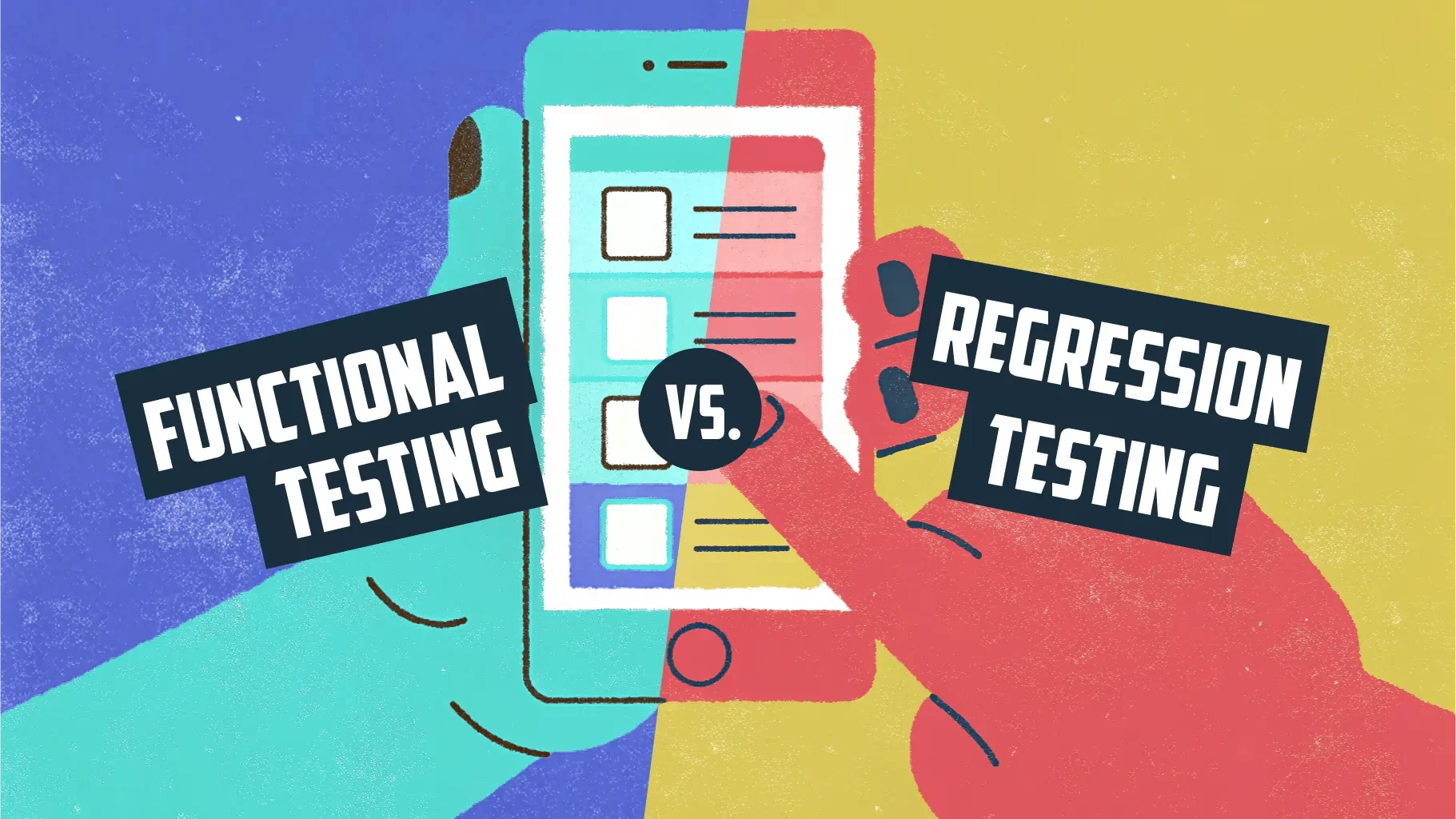Functional Testing vs Regression Testing in 2025
Introduction
Software products today are expected to deliver both speed and reliability. As businesses race to release new features and updates, the challenge lies in maintaining quality without slowing down delivery. This is where strong testing practices become essential. Among the most important techniques in software testing are Functional Testing and Regression Testing. While they serve different purposes, both play a crucial role in ensuring that applications remain stable, user-friendly, and bug-free throughout their lifecycle.
Although both aim to improve software quality, they serve different purposes in the software testing lifecycle. Functional Testing verifies whether new features meet business requirements and user expectations, while Regression Testing ensures that existing features remain stable when new updates or bug fixes are introduced. Together, they form the backbone of a strong QA strategy in 2025, especially in agile and DevOps-driven environments where change is constant.
This article explores the key differences between Functional Testing and Regression Testing, offers real-world examples, highlights best practices, and explains how combining both approaches with test automation helps teams deliver reliable, high-quality applications.

Get the Mobile Testing Playbook Used by 800+ QA Teams
Discover 50+ battle-tested strategies to catch critical bugs before production and ship 5-star apps faster.
What Is Functional Testing?
Functional Testing ensures that software behaves according to defined requirements and delivers the intended value to users. It focuses on validating what the system does, without examining the internal code structure. Testers typically take a “black-box” approach, concentrating on inputs and expected outputs.
Real-World Example
Consider a mobile banking app introducing a new feature: depositing checks by taking a photo. Before release, the QA team would:
Validate user flows: Test the complete process from tapping “Deposit” to receiving a success confirmation.
Check error handling: Ensure proper messages appear when photos are blurry or poorly lit.
Verify integrations: Confirm that deposits update the account balance and notify the server securely.
Through Functional Testing, QA ensures that the new feature works seamlessly and matches user expectations.
Key Characteristics of Functional Testing
Requirement-driven: Test cases are designed from user stories, feature specifications, or acceptance criteria.
User-centric: Prioritizes the end-user experience and ensures smooth workflows.
Early execution: Conducted during or right after development to catch defects quickly.
Automation opportunities: Repetitive flows can be automated with tools like Selenium, Cypress, or AI-driven platforms for faster validation.
What Is Regression Testing?
Regression Testing validates that existing functionalities remain intact after code changes, bug fixes, or feature enhancements. As software evolves, even small changes can introduce unexpected defects. Regression Testing reduces this risk by re-running previously executed test cases and confirming stability.
Real-World Example
Continuing with the mobile banking app scenario:
New feature: Adding an online bill payment option.
Existing features: Check deposit and funds transfer.
Regression Testing goal: Ensure that deposits and transfers continue to work flawlessly after the bill payment feature is introduced.
Without Regression Testing, updates could unintentionally break key functionalities, leading to user frustration and reputational damage.
Common Approaches to Regression Testing
Selective Regression Testing: Only re-test areas most likely impacted by recent changes.
Full Regression Testing: Re-run the complete test suite for major releases, ensuring maximum coverage.
Smoke Testing: A quick validation to confirm critical paths still function, often automated in CI/CD pipelines.
Functional Testing vs. Regression Testing: A Detailed Comparison
Factor | Functional Testing | Regression Testing |
Core Purpose | Validate new features and user flows against requirements | Ensure recent changes do not break existing features |
Timing | Conducted during or just after feature development | Performed after modifications and before release |
Scope | Focused on specific new or updated functionalities | Spans the entire application, covering stable modules |
Test Case Selection | Based on acceptance criteria and user stories | Reuses prior test cases, targeting high-risk areas |
Test Automation | Useful for repetitive feature scenarios but often starts manually | Highly effective with automation, especially in agile and CI/CD |
Risk Coverage | Confirms new features meet requirements | Protects against regression bugs impacting user experience |
Expanding Your QA Strategy with Both Testing Types
In 2025, relying solely on Functional Testing or Regression Testing is no longer enough to meet the demands of modern software development. Applications today are more complex, user expectations are higher, and release cycles are faster than ever. To build truly resilient applications, QA teams need a comprehensive testing strategy that combines the strengths of both approaches. By blending Functional Testing with Regression Testing and integrating automation frameworks, AI-driven testing tools, and CI/CD pipelines teams can ensure faster delivery, higher quality, and fewer production defects.
Best Practices for Functional Testing
Scenario-based testing: Instead of testing isolated functions, QA engineers should validate real-world workflows. For example, testing a checkout flow should include product selection, payment, and confirmation rather than just one isolated step. This ensures the application behaves as expected in user-like conditions.
Shift-left testing: By executing Functional Testing earlier in the development lifecycle, teams can catch issues before they snowball into larger defects. Integrating functional checks directly into the CI/CD pipeline ensures rapid feedback for developers.
Blend automation with manual testing: While automation helps cover repetitive checks at scale, manual exploratory testing remains vital for discovering usability issues or edge cases that scripted tests cannot capture. A healthy balance maximizes test coverage without slowing down releases.
Best Practices for Regression Testing
Prioritize critical features: Regression suites should always include business-critical workflows like login, payments, security, and data integrity. This ensures that core functionalities remain stable even as new features are introduced.
Maintain a living test suite: Test cases must evolve with the application. Continuously update regression tests to reflect new functionalities while retiring outdated cases. This prevents test bloat and keeps execution cycles efficient.
Use AI-powered regression testing tools: Intelligent tools can predict risk-prone areas of the codebase, reduce redundant test cases, and shorten execution time. By incorporating AI-driven regression testing platforms, teams save effort while ensuring higher reliability.
Common Pitfalls to Avoid
Even well-planned QA strategies can fail if overlooked details creep in. Some of the most common pitfalls include:
Overlooking dependencies: Small code changes may unintentionally break unrelated modules if dependency mapping is ignored.
Testing in unrealistic environments: QA test environments should mirror production as closely as possible to ensure accurate results. Otherwise, bugs may slip through undetected.
Ignoring data complexity: Many defects emerge only with diverse datasets. Testing with large inputs, special characters, or concurrent sessions is critical for validating real-world behavior.
When to Use Each Testing Approach
Use Functional Testing:
During feature development and before User Acceptance Testing (UAT).
To validate minor updates or new feature rollouts, ensuring correctness before release.
Use Regression Testing:
After code integrations, bug fixes, or performance optimizations.
Before major releases to guarantee overall stability.
Continuously in Agile or DevOps environments, where frequent changes require ongoing validation.
Conclusion
In 2025, Functional Testing and Regression Testing remain indispensable pillars of software quality assurance. Functional Testing ensures that new features align with requirements and deliver value to users, while Regression Testing preserves the integrity of existing features during constant change.
By combining both approaches with test automation, AI-driven testing platforms, and agile QA practices, teams can release faster, reduce risks, and deliver the seamless, high-quality digital experiences that modern users demand.





